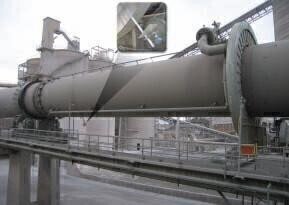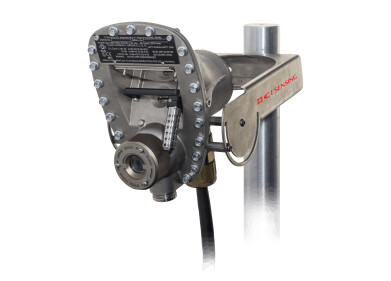Air Monitoring
Wireless Technology Helps Calportland Company Comply ILMBookstore.com With Air Quality Regulations at California Cement Plant
Jan 21 2010
Emerson Process Management’s Smart Wireless technology has enabled CalPortland Company to comply with air quality emissions requirements at its Colton, California, USA, cement plant, despite rotating equipment and harsh conditions.
The CalPortland installation includes Emerson’s self-organising wireless network of field instrumentation that reliably monitors the process used to reduce NOx emissions inside a rotating cement kiln at the facility. NOx is a by-product of the pyro process involved in the chemical procedure of cement manufacture.
The wireless network includes four of Emerson’s Rosemount® wireless temperature transmitters, one wireless DP transmitter, and a Smart Wireless Gateway. CalPortland chose wireless because it was the best solution that could meet the very challenging application. “The rotation, extreme temperature, and the location of the kiln (at 6 to 12 metres above ground), made using a wired solution impractical,” said
Steve Tyrrell, CalPortland senior electrical supervisor.
“With a rotary kiln, the continued addition of process variable instrumentation to optimise the control strategy becomes overwhelming. The wireless option allowed for movement of the process indicators to various positions on the kiln for development of the control strategy,” continued Tyrrell. “The minimal maintenance requirement of the wireless option also ensures reliability of the process signals for greater process control. We thought this was a perfect opportunity to apply wireless.”
The gradually-sloped 165 metre-long, four metre-diameter kiln rotates almost twice a minute and operates at temperatures as high as 1500°C. The company uses a Selective Non-Catalytic Reduction (SNCR) process of spraying ammonia into the kiln to control NOx emissions. It needed to monitor the temperature of the ammonia, the process gases as well as the kiln’s slight vacuum. It had tried using a slip ring around the kiln to check these parameters, but frictional wear ground down the ring and the growth of the kiln, as it heated up, broke insulators isolating the process signal.
“By installing this wireless network, we were able to monitor and treat the NOx in the kiln successfully when there was no other alternative,” Tyrrell said. “Wireless was a brilliant option for our project. This has allowed us to comply with the NOx emissions regulations and improve control over the process.
” The installation of the four devices onto the kiln was completed in one day. The DP transmitter was installed on the injection shroud to measure the extremely low vacuum inside the kiln. The temperature transmitters were installed at different locations around the kiln.
The self-organising network transmits signals reliably to a Smart Wireless Gateway despite the fact that devices are installed at opposite sides of the kiln. The line-of-sight view is blocked at times between some devices and the gateway, but no data has been lost. The gateway is integrated with the facility’s existing PLC control system.
Digital Edition
AET 28.2 April/May 2024
May 2024
Business News - Teledyne Marine expands with the acquisition of Valeport - Signal partners with gas analysis experts in Korea Air Monitoring - Continuous Fine Particulate Emission Monitor...
View all digital editions
Events
Jul 10 2024 Birmingham, UK
Jul 21 2024 Cape Town, South Africa
Australasian Waste & Recycling Expo
Jul 24 2024 Sydney, Australia
Jul 30 2024 Jakarta, Indonesia
China Energy Summit & Exhibition
Jul 31 2024 Beijing, China


















